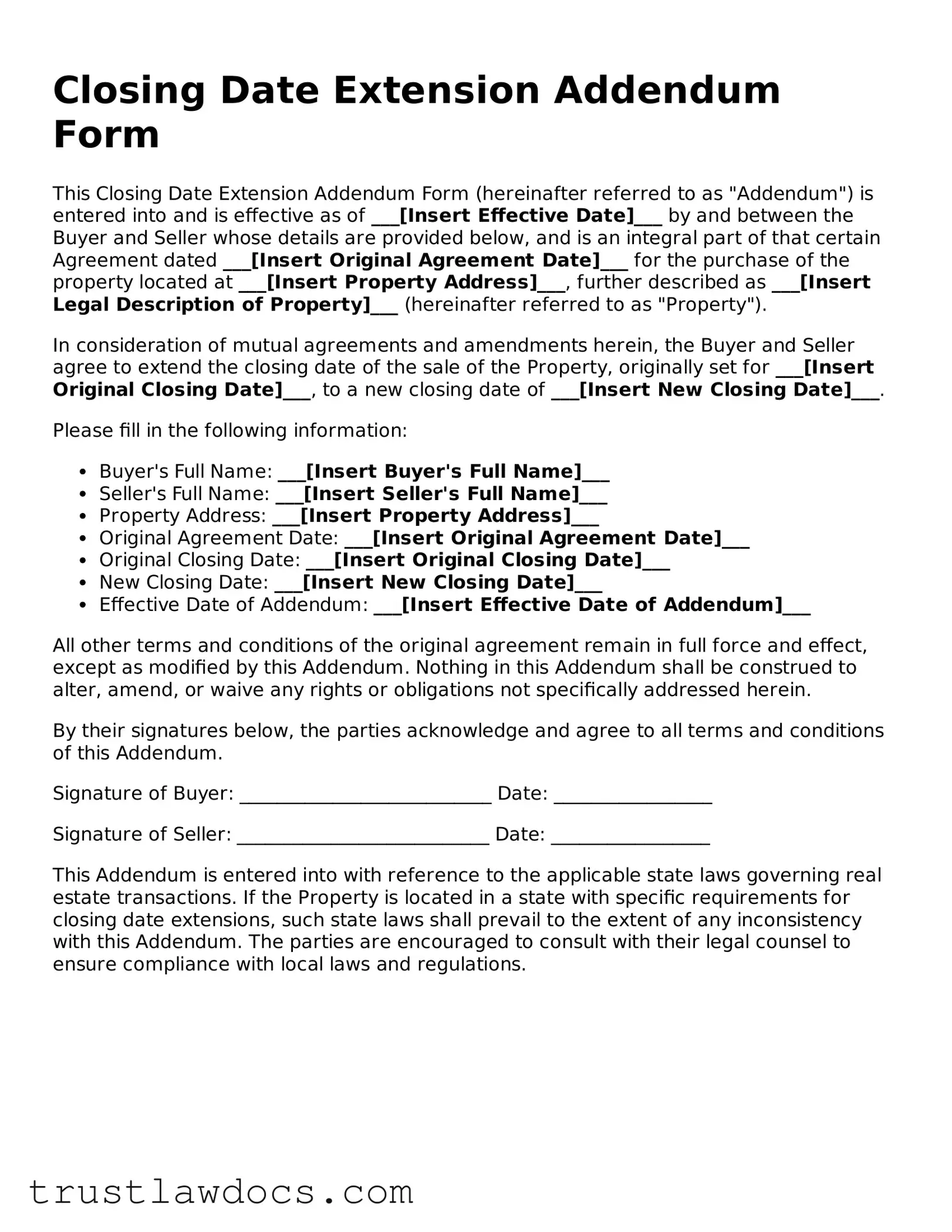Individuals engaged in real estate transactions often encounter the necessity of extending the closing date, a process which involves the Closing Date Extension Addendum. A precise execution of this form is critical, yet errors frequently arise, leading to unnecessary complications. One notable mistake is neglecting to obtain mutual agreement from all parties involved before proceeding. This oversight can result in disputes or even void the contract, emphasizing the need for clear communication and consensus.
Another common error is inaccurately specifying the new closing date. Precision is key in legal documents, and any ambiguity regarding dates can delay the transaction further or undermine the terms of the agreement. Ensuring that the date is correctly entered, including the day, month, and year, is an aspect that should never be overlooked.
Failure to properly identify the original contract by date or other specific identifiers is also a frequent misstep. This can lead to confusion about which agreement the addendum modifies, especially if there are multiple contracts or negotiations in play. Clearly referencing the initial contract ensures that the addendum's modifications are applied as intended.
Overlooking the necessity to reiterate terms that are unaffected by the closing date change is another area where errors are common. If particular aspects of the original agreement are to remain unchanged, explicitly stating so within the addendum can prevent misunderstandings and maintain the integrity of the original terms.
Occasionally, parties will fail to have the addendum reviewed by legal counsel before signing. While extending a closing date might seem straightforward, the implications can vary based on local laws and the specifics of the original agreement. Legal review helps to identify potential issues or conflicts that could arise from the modified terms.
Another mistake is not considering the impact of the extension on related deadlines and contingencies. For example, mortgage approval, inspections, and repairs might have timelines directly tied to the original closing date. Adjusting the closing date without adjusting these related timelines can result in missed deadlines and breach of contract.
Sometimes, individuals neglect to file or record the addendum properly, leading to its acknowledgment being disputed later. Proper filing with relevant local government or real estate authorities, depending on jurisdiction, is crucial to ensure the extension is legally recognized and enforceable.
Lastly, parties sometimes fail to obtain fresh signatures from all stakeholders, which can invalidate the addendum. The act of signing demonstrates acknowledgment and agreement to the updated terms, making it an essential step in the process of modifying any legal document.
In conclusion, care and attention to detail are essential when filling out the Closing Date Extension Addendum. Avoiding these common mistakes can greatly smooth the path to successful real estate transactions, ensuring that all parties move forward with a clear understanding and agreement.
